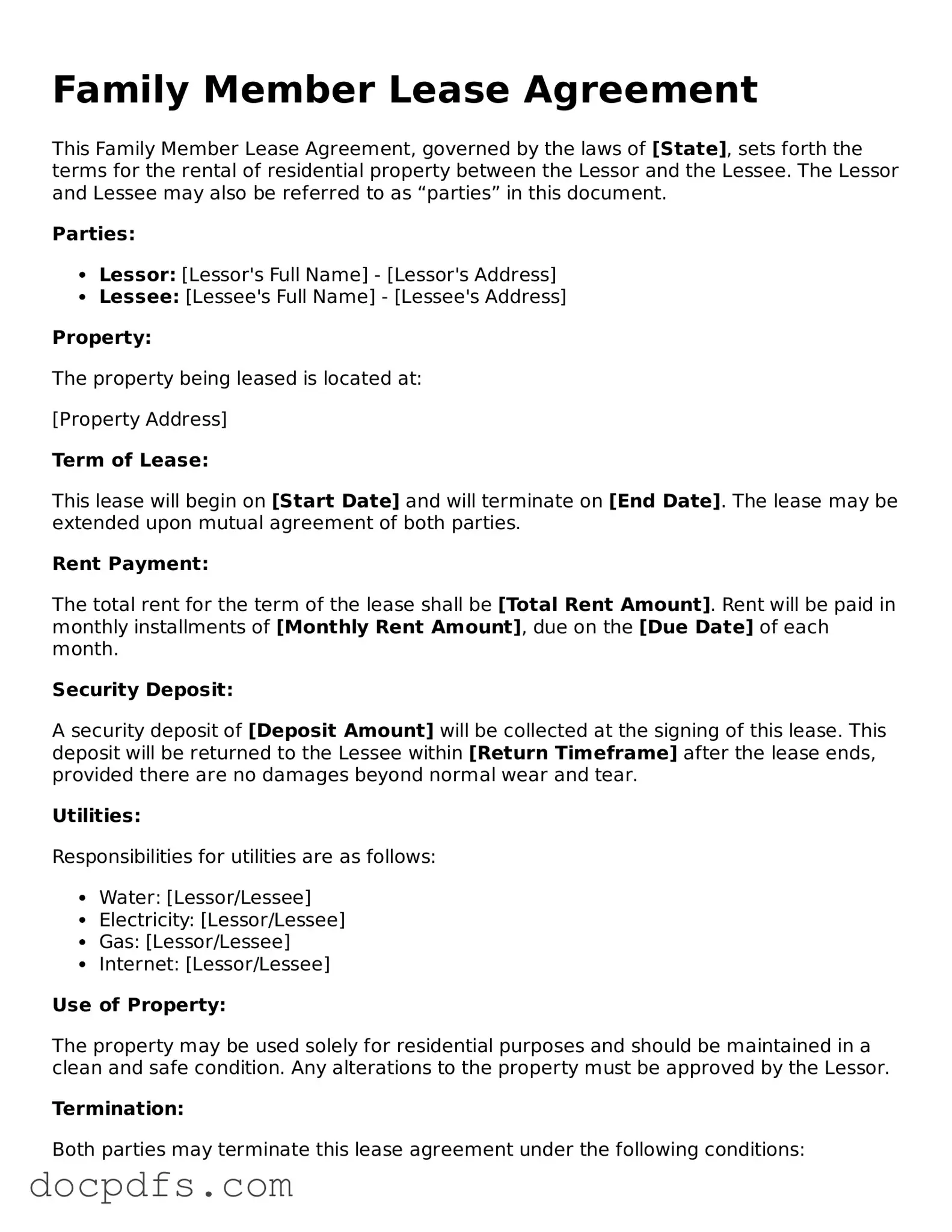Legal Family Member Lease Agreement Document
A Family Member Lease Agreement is a legal document that outlines the terms and conditions under which a family member may rent a property from another family member. This form helps to clarify expectations and responsibilities, ensuring that both parties understand their rights. It is essential for maintaining a harmonious living arrangement while protecting the interests of everyone involved.
Open Family Member Lease Agreement Editor Now
